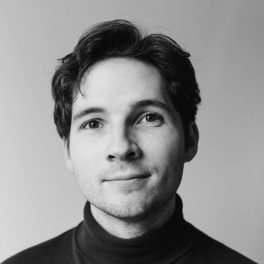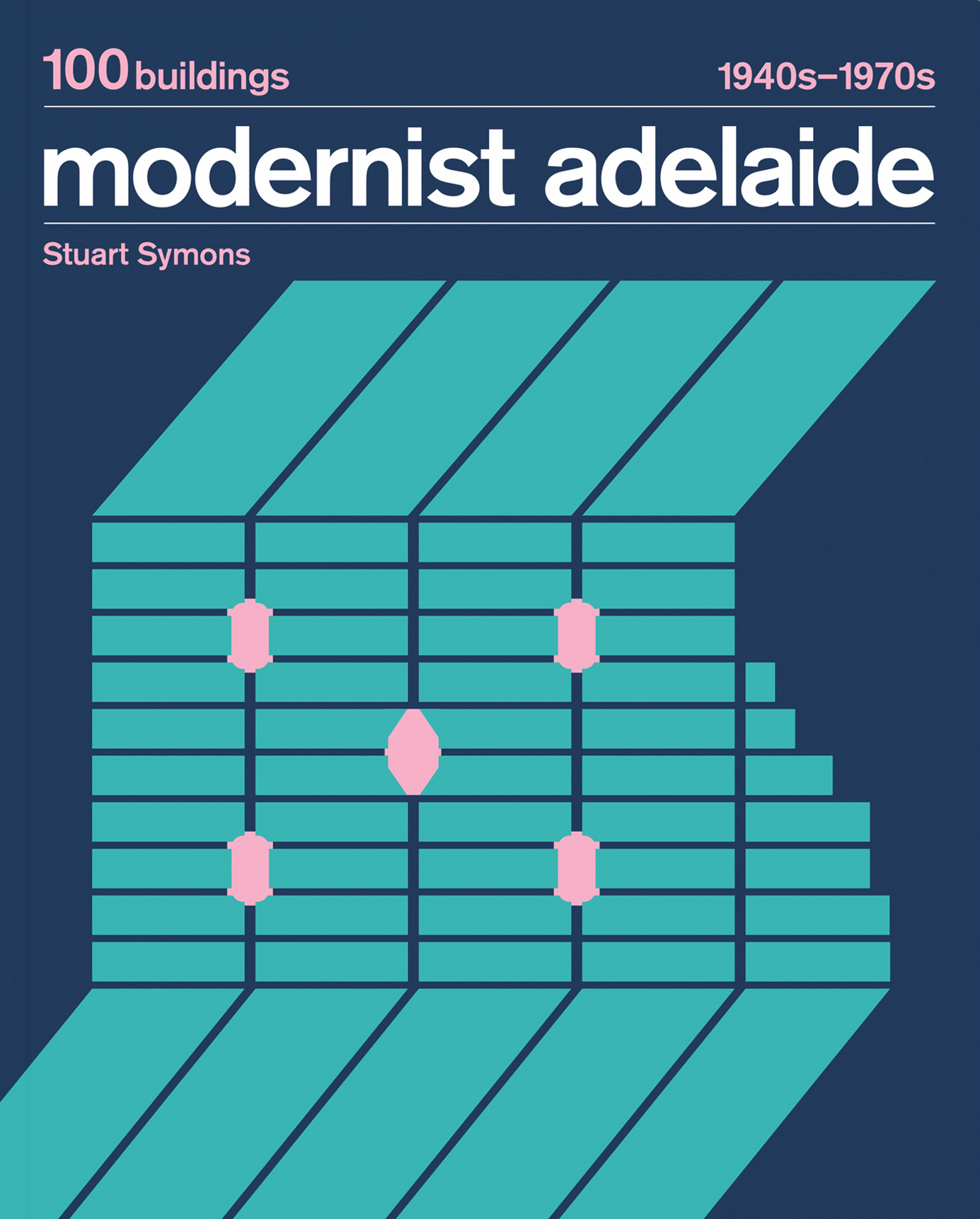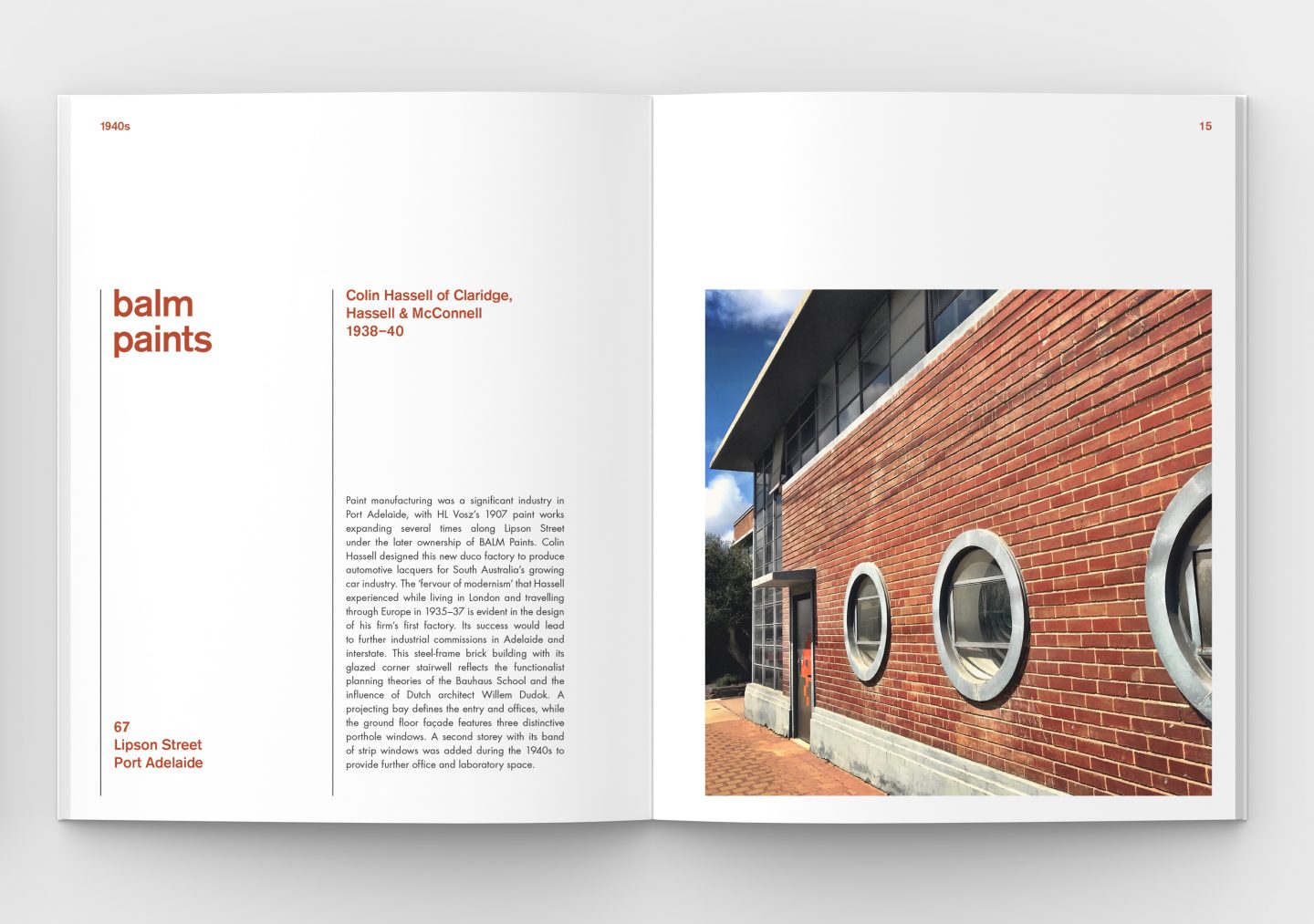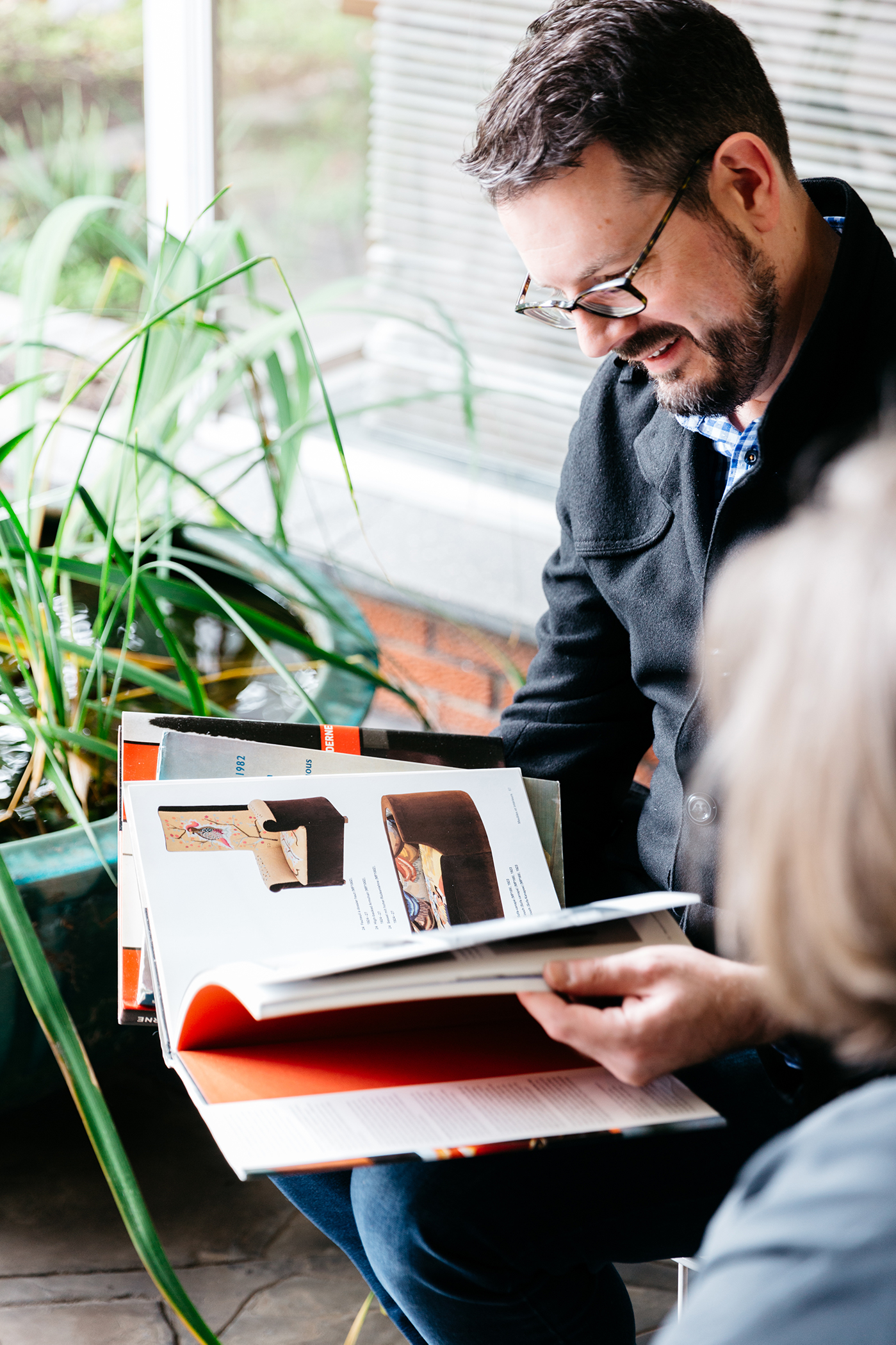
Walter Marsh
Walter is a writer and editor living on Kaurna Country.

If there’s one thing Modernist Adelaide historian Stuart Symons loves more than mid-century design, it’s books about mid-century design.
“We basically converted a bedroom in our house into a library – it’s one of the smallest rooms in the house, but it was perfect to put in floor-to-ceiling bookcases,” Symons tells The Adelaide Review.
“Appreciating architecture in person is one of life’s great pleasures, but when you can’t do that – especially with places on the other side of the world – experiencing it through beautiful books and photography is something that I just love.”
Since Symons started snapping pictures of striking, retro buildings around town and posting them to Instagram, his Modernist Adelaide project has evolved into a wide online following and a series of sell-out tours. With the December publication of Modernist Adelaide, Symons will finally bring his years of research and photography together into a coffee table-worthy tome of his own.
“For me, it’s not only the architecture but the interior design, the furniture design and also the graphic design of this period – I’d say I’m just about as obsessed with mid-century graphic design as I am about the architecture, and I think that comes out in how I wanted this book to come together.”

In keeping with the project’s beginnings on Instagram, Symons reached out to Buffalo, New York-based designer Julian Montague to create the book. Having also attracted a dedicated following on the social network with his vividly nostalgic, yet timeless work, Montague proved a perfect collaborator as they pieced together the book back and forth via the cloud.
“Funnily enough the different time zones could actually be quite helpful – I could send something off at 10.30pm and he’s just waking up and can get onto it,” he says. “I really wanted to celebrate that period of design, and Julian’s a designer but also an illustrator and an artist, and he really creates these worlds.”
Encompassing 100 buildings, Modernist Adelaide looks to both the city and the suburbs to trace the movement from the first wave of modernism-inspired architects who hit their stride in the 1940s to the last gasp of brutalism in the 1980s.

“Things like the BALM Paints factory in Port Adelaide, it’s just a cracker, it’s pure Bauhaus. Then it goes all the way through to the 1960s and 70s – the very last building is the State Bank building on the corner of Pirie Street and Gawler Place, which is actually early 80s but I think looks 70s. It’s arguably the last brutalist building to be built in Adelaide – and not long for this world unfortunately.”
The book offers a trove of information gleaned from old design journals, records and lifestyle magazines, along with insights Symons gathered on the ground talking to home owners and those who knew and worked with architects of the period. Many of these sources, Symons explains, have been hosts or attendees of his tours.
“But rather than just say, ‘here’s the buildings, here’s the design’, I’m trying to tell a story of Adelaide’s growth and evolution through that period particularly after the Second World War and the optimism, that growth and belief in design’s ability to create a better future.
“You had this really energised, motivated wave of young architects who just wanted to get out there and create a better society with this new form of architecture. It was a very visible embodiment of what was going on in Adelaide and South Australia as our economy was booming – our population growth was higher than the rest of Australia right up until the 1970s. With all this economic growth and all this manufacturing came the growth of suburbs, office buildings in the city, schools and universities and churches. “At the heart of it all was modernist architecture, and the book tries to run that thread through it.”

Walter is a writer and editor living on Kaurna Country.